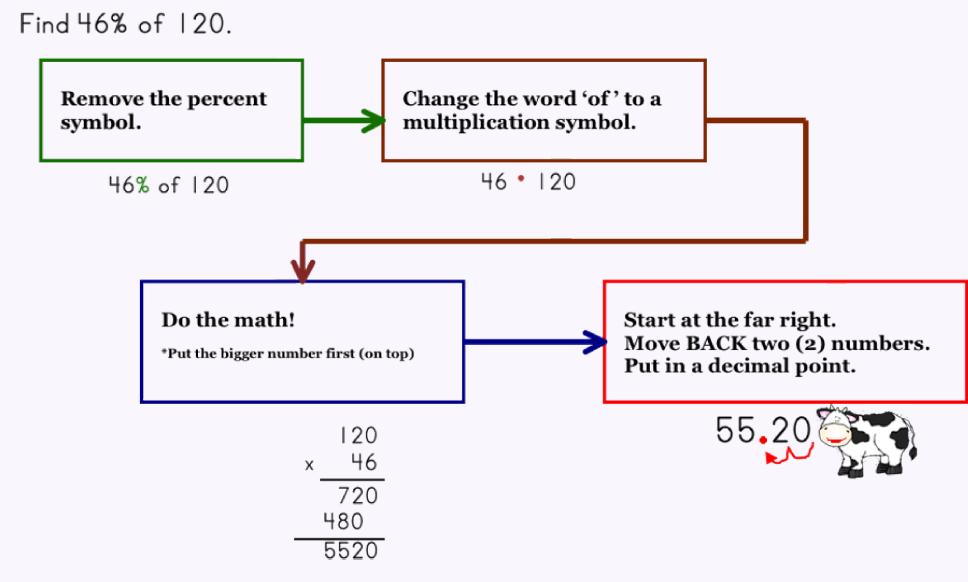 |
||||||||||||||||||||||
 |
||
Ahh…percents. That OTHER topic that is related to fractions that causes so much grief! Well, put that grief aside because I guarantee you 100% that you will soon be able to understand how to 'do' percents! |
||
You need to have a few skills under your belt before you begin:
|
||
Key words are ALWAYS important, particularly when working out word problems. Identifying the words and translating them into mathematical symbols is half of the battle in making the problem easier to solve. The key words you need to know and their corresponding symbols are: |
||
 |
||
 |
||
One of the most common types of percent problems is the 'out of' types of problems. Read each of the following. |
||
 |
||
Are you struggling with these types of percent problems? If you answered, YES! then go to the 'Out of' Percents page for help. |
||
 |
||
What's with all the cows? The cow simply helps you to remember to MOOOOOVE the decimal! That's it! It's a mnemonic device. Nothing more, nothing less… |
||
 |
||
Are you stumped yet? Are you thinking, "I need my calculator!" and, then realize, "I don't know what buttons to push!" Don't fret, these are actually really simple IF you remember to moooooo. |
||
Finding simple interest is actually a VERY good thing to learn because in REAL life, this is one of those things that you will want to learn. As you begin to work and start to save your money, chances are, you will want to open a saving account at a bank or credit union. At banks and credit unions, your money will earn what is called 'interest' which is a percentage of the amount of money you have saved. This is like your money is making money! The longer your money stays in the institution, the more you make (and, the MORE money in the account, the more you make). Once you understand this type of interest, then you need to learn about compound interest (the type for when you want to buy your first car so you need to get a loan…) See? Here is where learning about percents actually IS important! So, how do you go about computing simple interest? It is actually quite easy. |
||
Problem:
|
||
Step 1: Gather your data–P, r, and t
|
||||
Principle: 750 rate: 4.25% time: 4 years |
||||
Step 2: Write the rate (percent) as a decimal
|
||||
4.25% = .0425 |
||||
Step 3: Write your equation I = P • r • t
|
||||
I = 750 • .0425 • 4 |
||||
Step 4: Simplify. That's it!
|
||||
I = 31.875 or $31.88 |
||||
©2011–2017 Sherry Skipper Spurgeon. All rights reserved. |
||

